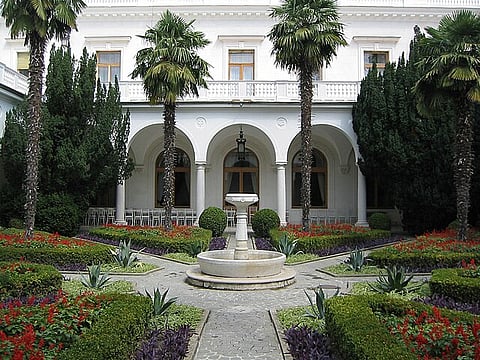
- Destinations
- Experiences
- Stay
- What's new
- Celebrating People
- Responsible Tourism
- CampaignsCampaigns
- SubscribeSubscribe
- Buy Now

A little over a century ago, World War I came to an end after the signing of the Treaty of Versailles. But the world refused to learn and two decades later found itself plunged into another war, only this time, it was arguably more savage and heart-wrenching.
The death toll of World War II is estimated to be 70-85 million people, more than that of the first one which took roughly 20 million lives. How does one begin to describe the pure barbarism that took place? There's probably not a single city in Europe which doesn't continue to remember these atrocities. The wounds left behind were not forgotten, and countries have taken various measures to document and share these histories to prevent further repeats.
We have compiled a list of historical places across Europe for travellers keen on learning about the two wars and how they shaped the continent's present.
Built before World War I, this fort acted as a shelter for the locals during the devastating Battle of Verdun in France. The battle resulted in a very minor change of territory but the deaths of millions set the tone for the rest of the war. Fort Douaumont remains one of the most well-preserved sites from that war. People can take a walk through its three levels and observe the guns, turrets and weaponry on display. The command posts and barrack rooms are also intact.
The site is about 4hrs from Paris by bus. A car journey is shorter and takes nearly 3hrs. Trains are also available if one prefers to travel by rail.
The Canadian National Vimy Memorial is one of Canada's largest war memorials. The Battle of Vimy Ridge, part of the larger Allied offensive, was an important event in World War I. The towering monument, which can be seen from miles away, is surrounded by a range of shell craters and trenches which have been reinforced. While their efforts are not as well-known as those of other Allied countries today, the Canadian Corps' contribution was a source of great inspiration to other members of the Allied Forces.
The Vimy Ridge is about 198km from the French capital city of Paris and takes roughly 2.5hrs by car. You can also drive from Lille, which is about 45 minutes away.
Possibly the most iconic World War II site, Auschwitz was one of the Nazi's largest concentration camps and today symbolises what humans are capable of inflicting on each other. Auschwitz witnessed over a million deaths and will forever be a reminder to the world of the Nazi's vicious legacy. It has since been converted into the Auschwitz-Birkenau State Museum.
Located on the outskirts of the city of Oświęcim, Auschwitz is about 2km from the train station. Local buses also provide transportation to the museum.
As the German resistance during World War II crumbled across Europe, leaders like Sir Winston Churchill, Joseph Stalin and Franklin D. Roosevelt came together to discuss the post-war world at Livadia Palace, in what would be known as the Yalta conference.
Built in a neo-Renaissance style, the meeting at the palace between Roosevelt and Stalin marked the beginning of the arduous Cold War, which would hold the world's attention for the next half century. Back in the day though, the palace was the summer retreat of the Romanovs.
Located in Crimea, a disputed territory between Ukraine and Russia, the Livadia Palace can be accessed by public transportation or private car.
The birthplace of Hitler's Operation Barbarossa, the Wolf's Lair was the German dictator's first headquarters on the Eastern Front. Built deep in the Masurian woods, three security zones surrounded the Führer's complex. The work to expand the lair was started in 1944 but the Red Army's rapid advances meant that developments at the lair were never completed.
It's best to start early to visit the Wolf's Lair as the trip from Warsaw to Kętrzyn will take about 4hrs (290km).
